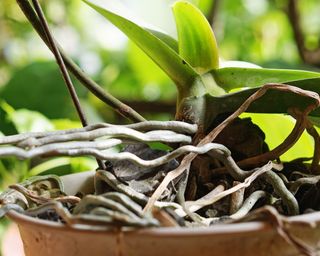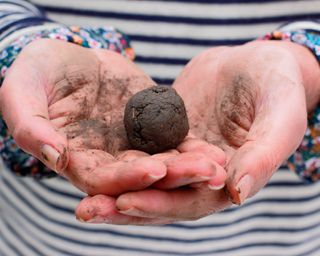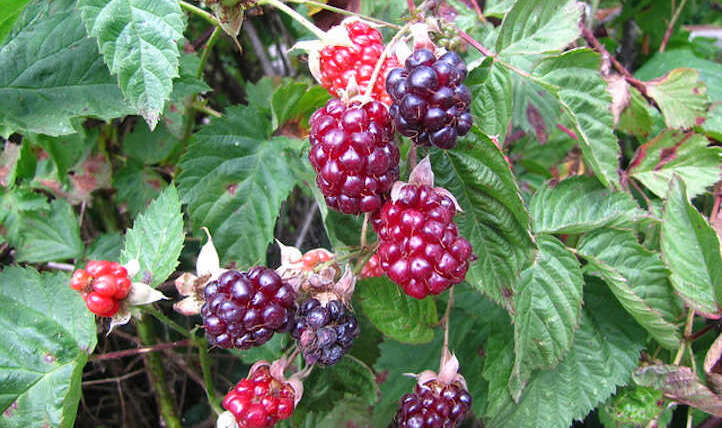Orchids are one of the largest families of flowering plants, with thousands of species found across the globe in every continent except Antarctica. The plants have a reputation as being hard to grow, but effective orchid care is easier than you might think.
Knowing when to repot orchids is key to looking after these exotic beauties. Over time the potting medium breaks down and compacts, and the plants deplete the available nutrients. Repotting orchids will refresh the soil and give plants the boost they need for new growth.
If you want to revive a struggling orchid or encourage repeat blooms, then repotting can make all the difference in transforming the plant’s health.
As there are so many different types of orchids, you must follow the care requirements for your particular variety. For example, the best orchid potting medium may include more absorbent materials for species that don’t like to dry out, or it may be a drier bark mix for pseudobulb orchids that retain more water within the plant.
Choosing the right orchid container is also key. Clear plastic pots with drainage holes are best, as they allow you to inspect the health of the orchid roots.
When To Repot An Orchid
Most orchid species need to be repotted around every two years. However, rather than do it on a schedule, it’s best to monitor the plant for signs it’s ready to be transplanted.
The best time to repot an orchid is when it is not actively growing. The cooler temperatures and lower light levels of fall and winter naturally slow down plant growth.
Unless there is an urgent need to repot, such as in the case of disease or insects, wait until the blooms are done.
(Image credit: Getty Images)
Signs It’s Time To Repot Your Orchid
- When the aerial roots are prolific or the soil-borne roots take over the pot. In these cases the roots cannot get enough moisture and keeping the plant hydrated becomes difficult. If watering orchids has become a daily endeavor, it is time to repot the plant.
- When the medium has broken down or is moldy or otherwise compromised. After a couple of years, the bark and other material will get stinky, rotten, and crumble easily in your fingers.
- When the plant is affected by a fungal disease or orchid pests. Overly wet and old material can produce mushrooms or other fungal bodies. Mealybugs and other insects often infest the potting medium.
- When your plant’s container is unsuitable. This could either be that the container is too small or large, or it could be too porous or too sealed. Whether natural evaporation is necessary or the variety needs to be kept damp, the container needs to be suitable for those conditions. An unglazed clay pot will dry out more quickly, while a glazed ceramic pot will hold water.
- When dead roots are present. This is a cue to remove the pot from the old medium and do some judicious pruning to remove any dead or diseased roots and freshen the medium.
- As the orchid mix breaks down, the pieces get tinier and tinier, compacting the soil and reducing the oxygen that can get into it. As the medium gets finer it holds more soil which can be bad for most orchid roots. Root rot and other fungal diseases often occur in such conditions.
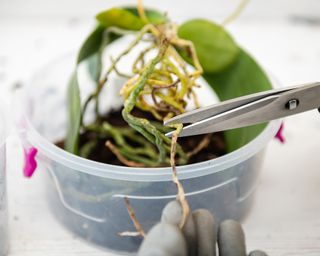
(Image credit: Getty Images)
Tips For Repotting Orchids
Before repotting your orchid, prune the old flower stem at the bottom node. Remove any stakes and clips. For newer flowering spikes, cut 1 inch (2.5cm) above the top node.
Remove the plant from its container and shake off the old media. Inspect the roots. Using sterile snips or pruners, cut out any diseased, soft, or discolored roots. Orchid roots should be evenly colored and firm.
Some orchid experts recommend sprinkling cinnamon on the roots after trimming to prevent fungal diseases.
Select a container that is 1-2 inches (2.5-5cm) larger than the previous pot. Repot and backfill around the roots with fresh media. Water and care for the plant as usual.
About Orchid Pots
The size of the pot depends upon the size of the plant. For most orchids, choose a container with a top diameter that is a third of the height of the orchid plant itself.
You can purchase those pretty, almost doily patterned ceramic pots that have decorative gaps to increase airflow. You can also select an unglazed, plain terracotta pot. This will be fine for most varieties.
Orchids that need to be kept quite moist will benefit from plastic pots which will keep in moisture. Other orchids will thrive in mesh containers with a liner of sphagnum moss and orchid medium. If in doubt, mimic the container the plant came in, but go up a size at repotting time.
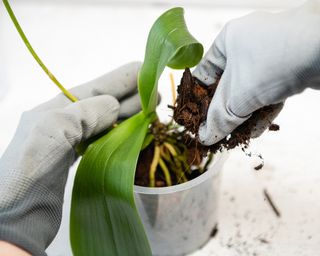
(Image credit: Getty Images)
The Right Potting Mix
Many orchids don’t grow in regular terrestrial soil. They will not thrive in gardens or potting soil. Many of these species are epiphytic and grow in tree crotches, rock crevasses, and other mostly soil-less areas. They need a very well-draining medium that lets in air.
Most purchased orchid mixes are made of bark, sphagnum moss, tree fern, and lava rock. Fir and Monterey bark are the most common barks in these mixes. The medium may also have clay pellets added to enhance drainage and prevent compaction.


